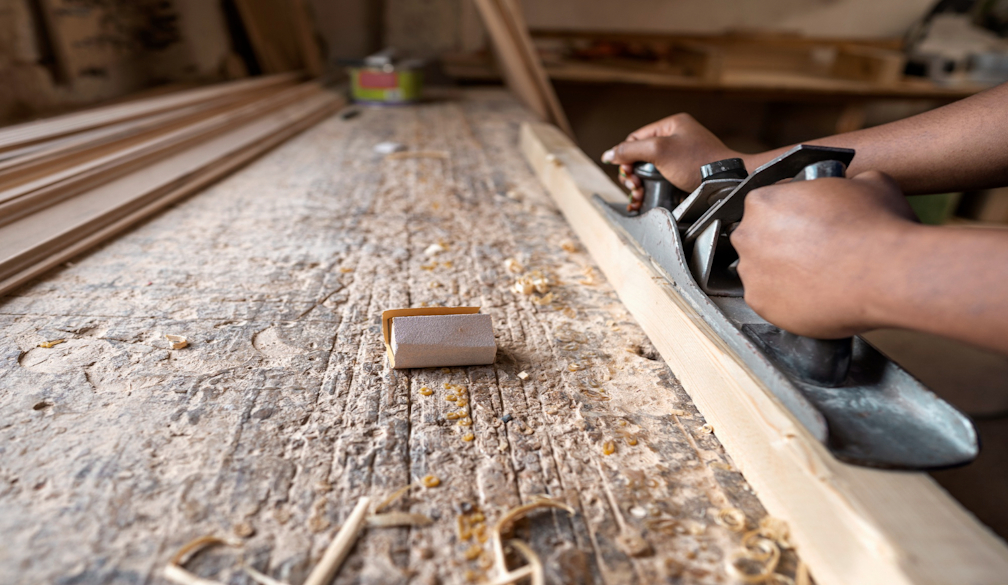Installation Process for Composite Decking
- Written by The Times

Composite decking has become a popular choice for outdoor spaces due to its durability, low maintenance, and aesthetic appeal. Installing composite decking involves a systematic process that ensures a sturdy and visually pleasing deck. In this comprehensive guide, we will outline the essential steps for the installation of composite decking, covering everything from preparation to framing and proper fastening techniques.
- Preparation:
The first step in installing composite decking is proper preparation. Begin by clearing the area of any debris, plants, or obstacles. Ensure that the ground is level, as an uneven surface can compromise the stability of the deck. If necessary, use a shovel or a small excavator to level the ground, taking care to remove any large rocks or roots.
After clearing and leveling the area, install landscape fabric to prevent weed growth. This simple yet effective step will help maintain a clean and manicured appearance for your deck over time. Additionally, consider using a gravel base to enhance drainage and reduce the risk of moisture-related issues.
- Framing:
- Joist Installation:
Once the ground is prepared, the next crucial step is framing. Begin by installing the joists, which are the horizontal beams that provide structural support for the decking. The spacing between joists is vital, and it typically ranges from 12 to 16 inches. Follow the manufacturer's recommendations for the specific composite decking product you are using.
Use treated lumber for the joists to prevent rot and decay. Secure them to the support beams or ledger board with galvanized screws or nails, ensuring a secure and stable foundation for the composite decking.
- Ledger Board Installation:
If attaching the deck to the house, install a ledger board along the house's exterior. Ensure that it is securely attached to the house's framing with lag screws or bolts. Proper flashing is essential to prevent water damage, so use a corrosion-resistant flashing material between the ledger board and the house.
- Deck Board Installation:
With the framing in place, it's time to install the composite deck boards. Begin by determining the layout and direction of the boards, taking into consideration the design and any specific patterns you want to create.
- Spacing and Fastening:
Follow the manufacturer's guidelines for proper spacing between the deck boards. Typically, a 1/8-inch gap is recommended to allow for expansion and contraction. Use stainless steel or composite deck screws for fastening, as they resist corrosion and provide a secure hold. Pre-drilling may be necessary to prevent the decking material from splitting.
- End-to-End Butt Joints:
When installing the boards, use end-to-end butt joints for a seamless appearance. Ensure that the butt joints are tight to prevent any gaps. If needed, stagger the joints for added visual appeal.
- Trimming and Finishing:
After the main deck area is covered, trim the boards to fit the perimeter using a saw. Consider using picture framing techniques for a polished look, where a border of deck boards surrounds the outer edge.
- Railing Installation:
- Post Installation:
If your deck includes railing, install the posts first. Use the appropriate spacing between posts, ensuring stability and safety. Secure the posts to the framing using lag screws or bolts. Post sleeves can be added for aesthetic purposes, providing a clean and finished appearance.
- Rail Installation:
Attach the railing components according to the manufacturer's instructions. This often involves securing the top and bottom rails, followed by attaching balusters or spindles. Be meticulous about measurements and leveling to achieve a professional finish.
- Finishing Touches:
With the main structure and railing in place, focus on the finishing touches to enhance the deck's overall appearance and functionality.
- Skirting and Fascia:
Install skirting around the deck perimeter to conceal the underlying structure. This not only improves aesthetics but also helps prevent pests from nesting beneath the deck. Add fascia boards to cover the exposed ends of the deck boards for a polished look.
- Stairs:
If your deck includes stairs, construct them with careful attention to rise and run dimensions. Use stringers for support and attach the treads securely. A well-constructed stairway adds both functionality and visual interest to the deck.
- Maintenance Tips:
- Regular Cleaning:
To ensure the longevity of your composite deck, perform regular cleaning. To get rid of filth and debris, use a soft-bristle brush and a mild detergent. Pressure washers and abrasive cleansers should be avoided as they might harm the surface.
- Preventing Mold and Mildew:
Composite decking is resistant to mold and mildew, but it's still essential to keep the surface clean and free from debris. Adequate ventilation around the deck will also help prevent mold growth.
- Periodic Inspections:
Periodically inspect the deck for any signs of damage or wear. Replace any damaged boards promptly to maintain the deck's structural integrity.
In conclusion, the installation of composite decking involves a systematic process encompassing preparation, framing, board installation, railing assembly, and finishing touches. By following these steps and adhering to manufacturer guidelines, you can create a durable, low-maintenance, and visually appealing outdoor space that enhances the beauty and functionality of your home. Additionally, incorporating proper maintenance practices will ensure the longevity and continued enjoyment of your composite deck for years to come.










